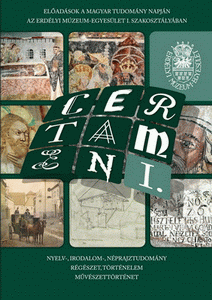“Beata Virgo Nostra Deésiensis”. Mária-kegyképek tisztelete a dési ferences templomban
“Beata Virgo Nostra Deésiensis”. On the Cult of Miraculous Images of the Virgin Mary in the Franciscan Church in Dej
Author(s): Zsolt KovácsSubject(s): Cultural history
Published by: Erdélyi Múzeum-Egyesület
Keywords: baroque copies of miraculous images from Şumuleu; Cluj; Mariazell; Mariahilf from Passau; Loretto; Częstochowa; Kaltenbrunn; Cult of Virgin Mary; Dej; franciscan order; lachrymose icon; Zsigmond Kornis
Summary/Abstract: The present article aims at stressing the rich and varied phenomenon of the cult of miraculous images in Transylvania through the analysis of archival data and of copies of miraculous depictions of the Virgin Mary preserved in the Franciscan monastery in Dej. I selected as case study the church in Dej not because of the significant number of preserved art works, but rather due to the large number of written sources that allowed us to accurately reconstruct the inventory of the church during the Baroque period. Among the religious images related to the cult of the Virgin Mary preserved in the Franciscan church from Dej, an icon from the Romanian church in Hăşmaş held a special place, which is an interesting case of a local cult created around an image deemed miraculous; the formation of this cult was also linked to governor Zsigmond Kornis (1677–1731) whose passion for collecting miraculous images was well known and mentioned in the older literature. Besides this phenomenon, one must also note that due to the richness of preserved written sources, the Baroque image of the inside of the church can be reconstructed and it included a relatively large number of replicas after the most important miraculous depictions of the Virgin Mary from Transylvania (the icons from Şumuleu Ciuc and Cluj) and Central Europe (Mariazell, Mariahilf, Loretto, Częstochowa). This indicates, on the one hand, the importance of the Virgin Mary’s cult and its expression through different visual means, and on the other hand, it stresses the importance of the cult of images, a primordial phenomenon of Baroque religiosity.
Journal: Certamen
- Issue Year: 2013
- Issue No: I
- Page Range: 401-420
- Page Count: 20
- Language: Hungarian

